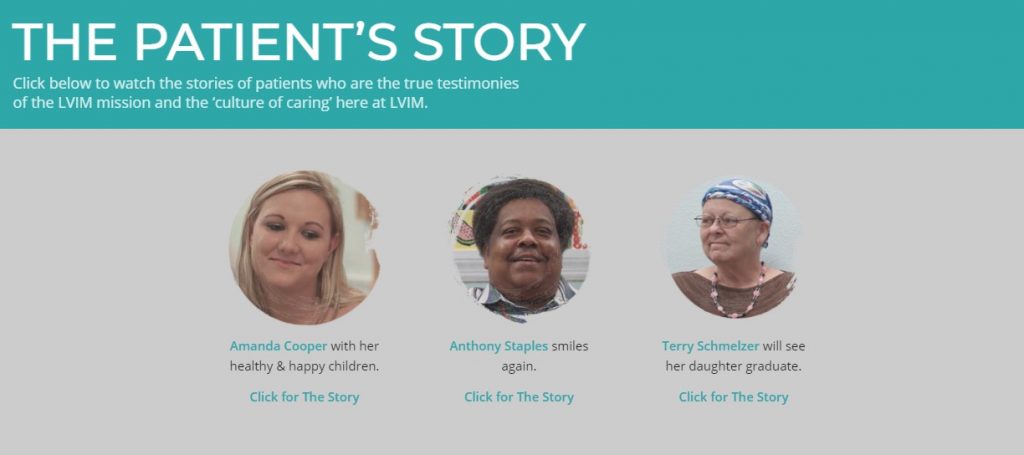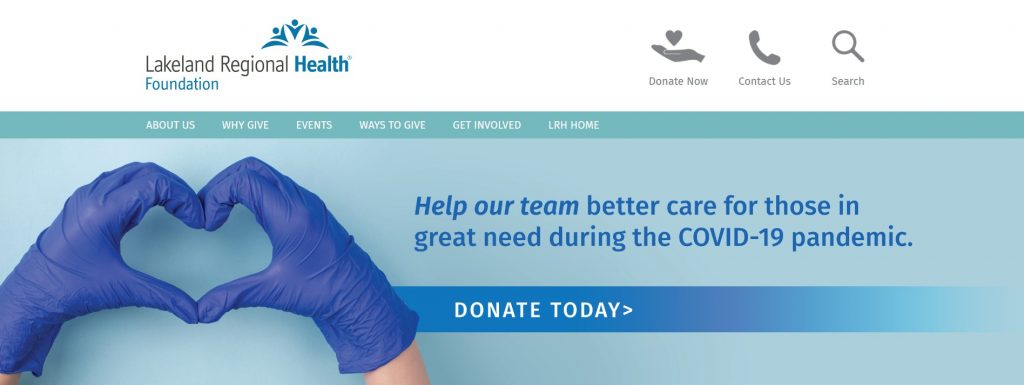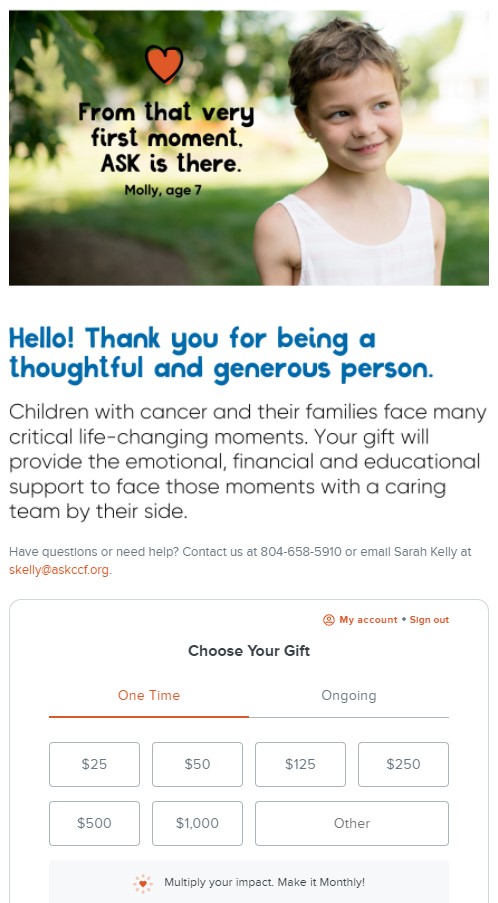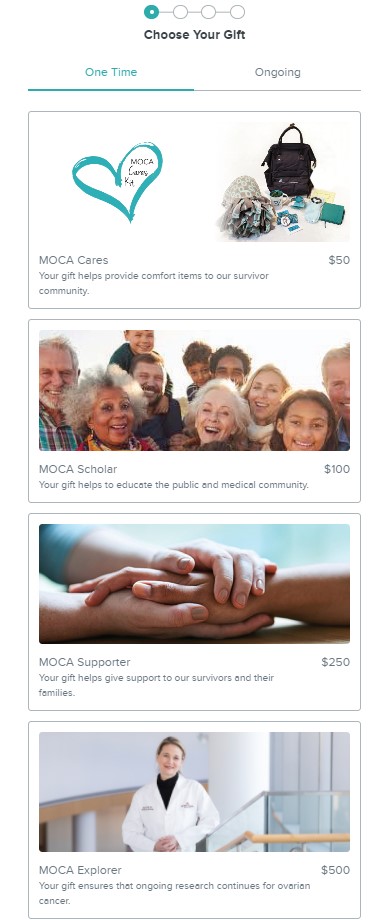Donation forms for medical nonprofits can be puzzling. You need to raise money for research, support, and awareness-building, so having a compelling donation form is important. But so many industry best practices are hard to follow when you’re with a health-focused nonprofit. How can you build an in inspiring donation form while following the unique rules associated with your work?
We’re here to show you.
Common challenges associated with building donation forms for medical nonprofits
A number of nonprofit industry best practices are hard to navigate when you’re dealing with medical causes. Here are just a few obstacles you might face when building your donation form:
- Donors are more likely to give when they see pictures of people they’ll support. But donation forms for medical organizations must abide by privacy laws make sharing photos of beneficiaries difficult
- Patient success stories are compelling, but you need to protect your patients’ privacy and follow HIPAA laws.
- If you’re a Foundation or charitable branch of a for-profit organization, you may need to show affiliation with that parent company.
- For legal reasons, you may need to be extra-careful when talking about how donors’ gift will make an impact (you can’t say donors will fund a cure, etc.)
4 Handy Tips for Building Donation Forms for Medical Nonprofits
How on earth do you work around those obstacles? By following these (relatively) simple tips!
Tip #1: Use stock photos to represent patients
Pictures of real people help inspire donors to give, but you may not be able to use photos of real patients. There are lots of reasons you may want to avoid using photos of real patients. You may be concerned about HIPAA violations and other privacy legislation. Patients may be willing to share their stories but aren’t comfortable sharing their likeness. You may be concerned about patient privacy, especially if you deal with sensitive health issues or are worried about seeming exploitative or insensitive.
If you want to include compelling photos on your donation form, looking for a solid stock image may be your best bet. It’s easy to shy away from the ideas of stock images, especially if you’re used to the stiff smiles or weird subjects that are often associated with stock photography (does anyone remember the “women laughing alone with salad” meme?). But we’ve come a long way since the early days of the Internet! There’s some fantastic stock photography out there.
Don’t worry if you don’t have a budget for stock photography, either. These are some of our favorite sources for free stock photography. Be sure you provide adequate attribution if the license requires it!

How to choose a great stock photo
Don’t know what to look for in a good stock photo? Here are some quick tips for choosing a good one:
- Look for images that include smiling or happy-looking people (or animals). As a general rule, images that generate positive feelings outperform those that spark sadness, pity, or anger.
- Donors are most likely to give when you show them images of individuals or small groups (think 2-3 people), especially if the subjects are making eye contact with the camera.
- If you choose a before-and-after photo, make the happy “after” part of the image the focus.
- Avoid using photos of buildings or inanimate objects.
- Images that make donors feel like they’re observing an important part of your work can also be really effective!
Or, try this creative photo option
If you’re not comfortable using stock photography for your nonprofit but still want to use an image to connect donors to your patients, try showing photos that highlight patients’ hands, silhouettes, or other poses. Need inspiration? Check out some of the stories over at Humans of New York.

Tip #2: Build composite stories or use stories from volunteers, staff, and other supporters
The best way to inspire people to support you is to tell them good stories. But finding and telling stories can feel overwhelming when you’re trying to protect patients’ privacy.
HIPAA laws and other privacy legislation mean you need to be careful about the stories you tell. If you can’t tell patient stories, try creating a composite character—a fictional character whose story is drawn from real-life patients. Think about common struggles your patients face.
If your nonprofit focuses on a rare disease, create a story about a patient who searched for years for a diagnosis. Ronald McDonald Houses might want to build a story about a family that needed a place to stay while their daughter sought medical treatment.
If you’re a nonprofit clinic that provides medical care to your community, write a story about an adult who went without a doctor until they found your organization. Get creative!
You may have patients who are willing to share their stories or testimonies with their names attached. Check with your legal team to make sure you have all legal bases covered before you start sharing! You may need to have your patients sign a waiver before you can share their information.

Another valuable resource you can explore is the group of people who support your work. Your staff and volunteers are a valuable source of stories! Ask them to share why they got involved, what your mission means to them, etc. Be sure you don’t ask them about their patients, though—you don’t want a potential HIPAA violation on your hands.
Tip #3: Use branding to establish relationships with other organizations
If you’re a nonprofit who’s associated with a larger organization, you may need to relay that information to your donors. Nonprofits with different branches of national organizations generally have a set style guide for their organization. It’s easy for donors to know that they’re giving to a regional branch of Susan G. Komen, for example, because the branding is so similar. But what about smaller medical nonprofits that don’t fall under a national umbrella?
Take notes from national organizations and use branding to show donors the relationship between your nonprofit and your parent company. Try incorporating elements of your parent organization’s branding in your own branding so your donors understand how the two of you are related.

If your parent organization has a distinct style for their own marketing, try riffing on that established brand. Incorporate their color schemes, logos, and other design elements on your form so your donors can make the connection.
Tip #4: Be intentional about your impact statements
Donors like to know what their gifts are going to accomplish. While it’s tempting to show them the best-case scenario you also have to be realistic. Don’t promise donors the moon unless you know you can deliver! If you’re helping fund disease research, don’t tell them they’ll find a cure. Instead, tell them they’ll fund research into a cure. It’s a subtle difference, but it’s an important one! Your impact statements should be compelling, but they also need to be deliverable.

When you can, focus as much as possible on how donors’ support will make a tangible difference on other peoples’ lives. The more personal you can be, the better! Telling a donor that their gift will provide medical care for one person is more compelling than telling them they’ll help provide medical care to your 2,000 patients. If you can, use images to reinforce the impact statements you include on your donation form.

Conclusion
Employees of medical nonprofits face some unique challenges while they’re putting together their online donation forms. You need to create a donation form that inspires donors to give, but you also need to navigate privacy laws and other restraints at the same time.
These tips will help you put together a compelling donation form without confusing your donors or violating data privacy laws! Use stock photos, carefully-selected stories, and thoughtful impact statements to inspire donors to give, and use your branding to subtly establish any relationships to other umbrella organizations with whom you’re associated.
Does your medical nonprofit need a great donation form? We can help! Contact us to learn more about our online fundraising tools and how we can help you meet your goals.


